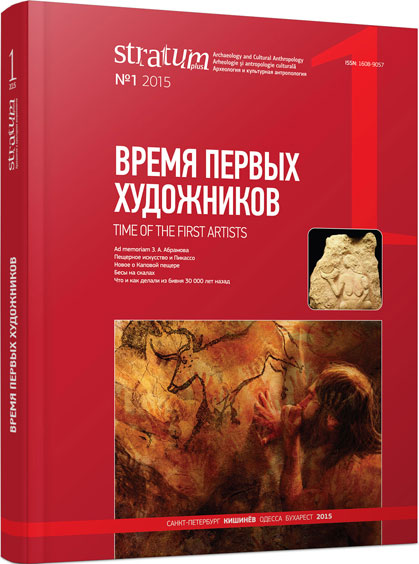Трасологические критерии отличия предметов первобытного искусства и остатков фауны с естественными видоизменениями
Discrimination between Prehistoric Artworks and Naturally Modified Faunal Remains in the Light of Traceological Studies
Author(s): Valentin B. Pankowski, Evgeny Yu. Girya, Mikhail V. SablinSubject(s): History, Archaeology
Published by: Издательский дом Stratum, Университет «Высшая антропологическая школа»
Keywords: East Europe; Caucasus; Palaeolithic; Bronze Age; art objects; naturally modified objects; use-wear analysis
Summary/Abstract: Comparative traceological analysis makes it possible to discern between natural (pathological, invasive) and artificial modifications (sawing, cutting, drilling, abrasion) seen on the hard tissues of mammals and other organisms. The cuneiform defects not infrequently observed on the dentin and tooth enamel of cattle and produced by the action of rough particles contained in the plants eaten by animals, can look like traces of sawing. The traces left by parasites attaching themselves to the spines of sea hedgehogs also can be taken as a result of intentional working. The holes drilled by the Natica mollusks in some shells are almost indistinguishable from artificially made holes. Long-term studies of macro- and microtraces have made it possible to create a collection of reference specimens that can be used to differentiate between truly artificial and pseudo-artificial (natural) modifications.
Journal: Stratum plus. Археология и культурная антропология
- Issue Year: 2015
- Issue No: 1
- Page Range: 169-184
- Page Count: 16
- Language: Russian
- Content File-PDF

